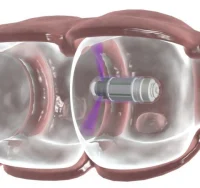Management of back pain appears to be variable, despite numerous published clinical guidelines, according to a report published by JAMA Internal Medicine, on 29 July.
Spinal symptoms are among the most common reasons patients visit a physician and more than 10 percent of visits to primary care physicians relate to back and neck pain.
John N. Mafi, M.D., of Harvard Medical School, Boston, and colleagues used nationally representative data from the National Ambulatory Medical Care Survey and the National Hospital Ambulatory Medical Care Survey to examine the treatment of back pain from January 1999 through December 2010. Researchers assessed imaging, the use of narcotic medications and referrals to physicians, as well as the use of nonsteroidal anti-inflammatory medications or acetaminophen and referrals to physical therapy.
“Back pain treatment is costly and frequently includes overuse of treatments that are unsupported by clinical guidelines. Few studies have evaluated recent national trends in guideline adherence of spine-related care,” the study notes.
Researchers identified 23,918 visits for spine problems. Approximately 58 percent of the patients were female, and the average age of patients increased from 49 to 53 years during the study period.
According to the results, the number of radiographs remained at about 17 percent, but the number of CT scans or magnetic resonance images increased from 7.2 percent to 11.3 percent during the study period.
Nonsteroidal anti-inflammatory drug or acetaminophen use per visit decreased from 36.9 percent in 1999-2000 to 24.5 percent in 2009-2010, while narcotic use increased from 19.3 percent to 29.1 percent. Physical therapy referrals remained unchanged at about 20 percent, but physician referrals increased from 6.8 percent to 14 percent.
“Despite numerous published national guidelines, management of routine back pain increasingly has relied on advanced diagnostic imaging, referrals to other physicians, and use of narcotics, with a concomitant decrease in NSAID or acetaminophen use and no change in physical therapy referrals. With health care costs soaring, improvements in the management of back pain represent an area of potential cost savings for the health care system while also improving the quality of care,” the study concludes.
References:
John N. Mafi, Ellen P. McCarthy, Roger B. Davis, Bruce E. Landon. Worsening Trends in the Management and Treatment of Back Pain. JAMA Intern Med. Published online July 29, 2013. doi:10.1001/jamainternmed.2013.8992.
Latest Articles
Imaging, Back Pain
Management of back pain appears to be variable, despite numerous published clinical guidelines, according to a report published by JAMA Internal Medicine,...










